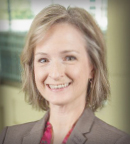Experts and patients alike would agree that navigating the current fragmented U.S. health-care system is not an easy task. One component of that disconnection may center on the relationship between oncology and primary care. The benefits of collaboration between oncologists and primary care providers are many across the entire cancer care continuum, from screening to risk reduction through survivorship. However, in the current climate, there are many challenges that prevent an optimal joint effort between members of these specialties on behalf of patients with cancer. In fact, approximately 20% of those cancer survivors surveyed by the National Coalition for Cancer Survivorship are using the services of a primary care provider. In May, a panel of experts assembled in Washington, DC, to participate in the National Comprehensive Cancer Network (NCCN) Oncology Policy Summit: Pathways to Partnership: Strengthening Collaboration Between Primary Care and Oncology.
What Happens Without Collaboration?
Panel moderator Clifford Goodman, PhD, a consultant in health-care technology and policy, opened the discussion by asking the panel what goes wrong when there is not solid collaboration between oncology and primary care—for care providers, patient advocates, patients with cancer, and cancer survivors.

Clifford Goodman, PhD

Veronika Panagiotou, PhD

Dorothy Rhoades, MD, MPH

Andrea Porpiglia, MD, MSc, FACS
Veronika Panagiotou, PhD, Director of Advocacy and Programs, National Coalition for Cancer Survivorship, and an 11-year survivor of non-Hodgkin lymphoma, shared these comments in reply: “If we don’t have from the moment of diagnosis until the end of life a partner in a primary care provider to walk us through not only the latent long-term effects of treatment but also our general health, our quality of life and functioning suffer.”
For Dorothy Rhoades, MD, MPH, Professor of Medicine at the University of Oklahoma Health Sciences and OU Health–Stephenson Cancer Center, and Director of the Native American Center for Cancer Health Excellence, without collaboration in her world, there would be delays that hamper access to care. Geographic access problems across her state, she added, compound the issue.
Andrea Porpiglia, MD, MSc, FACS, Associate Professor and Assistant Program Director, Complex General Surgical Oncology Fellowship, Fox Chase Cancer Center, Philadelphia, and member of the NCCN Clinical Practice Guidelines in Oncology for Survivorship panel, commented that not only can there be delays but also redundancy in care, with services being called for by primary care physicians who may be unaware that an oncologist has already requested them.
“Patients then become frustrated,” Dr. Porpiglia noted, “when they believe their physicians are not talking with each other.” They may even feel abandoned in the face of poor transition between oncologists and primary care providers, she added. “They may feel the oncologist has let them go with no continuity.”
Several issues are at play when collaboration is less than ideal, according to Linda Overholser, MD, MPH, Associate Professor, Medicine–Internal Medicine, University of Colorado Anschutz Medical Campus, Aurora,

Linda Overholser, MD, MPH
another member of the NCCN Clinical Practice Guidelines in Oncology for Survivorship panel. “Cancer does not happen by itself often; people may have other comorbidities. So, if we are treating their cancer, their diabetes might get worse or their hypertension may be less well controlled; there are missed opportunities here if care is not coordinated,” she explained. And, a well-connected care team can enforce the importance of health promotion, counseling, and preventive health strategies. Finally, effective monitoring of patients for late events from cancer treatment relies on information passing between oncologists and primary care providers.
What Barriers Prevent a Working Partnership?
According to Dr. Rhoades, “resources and time” are two key barriers to nurturing a working partnership between oncology and primary care. An investment in the supportive staff to navigate this connection is needed, she noted, “but the return-of-investment argument is difficult.”
A clear understanding of the individual roles of the primary care provider and oncology team is also key, noted Dr. Porpiglia. Additionally, she stated that primary care providers who take on responsibilities of survivorship care are often not reimbursed for them. Without a working partnership between the two specialists, redundant and inefficient tasks, such as numerous electronic health records, may result.
Skyler Taylor, MD, a hematology/oncology fellow at Mayo Clinic College of Medicine and Science, Arizona, who is also a testicular cancer survivor, shared a clinical experience with a patient treated for lymphoma, who required follow-up labs twice a week after chemotherapy. Unfortunately, the information about the discharge notes and this request was not received by the patient’s primary care provider; and the patient ended up in the emergency room. This is a clear example of the troubles that may occur when the oncologist and primary care physician are not in the same information loop.

Skyler Taylor, MD
Another facet of the problem, according to Dr. Panagiotou and her own personal experience as a cancer survivor, may center on a lack of communication between the oncologist and the patient. “A roadmap of survivorship care plan can help patients understand best practices and the need for monitoring and enable them to advocate for themselves,” she explained. “The onus then falls to the patient to navigate all these professionals, and their care becomes more complicated. Information sharing needs to be a two-way street.”
What Does Success Look Like?
When asked by Dr. Goodman what successful collaboration between primary care and oncology might look like, Dr. Porpiglia shared her experience at Fox Chase Cancer Center with the Care Connect program. Started in 2015, this program is intended to help primary care providers to become more involved with oncology care. It now includes 60 primary care (or other) providers outside the system, who receive complimentary access to electronic medical records. This way, oncologists at Fox Chase can easily send a message to primary care providers about a patient’s treatment or offer an update, and in turn, they can access any chart information they need about their patients.
“I think the program has been a success and keeps primary care physicians more actively involved,” Dr. Porpiglia said. The components of this success, she added, are finding out what primary care providers need to participate in the oncology treatment as well as what patients need. Finally, she continued, Fox Chase also has liaisons that go to the primary care offices to ensure their needs are being met.
Another example of an effective alliance between specialties was shared by Dr. Taylor. He once witnessed a primary care physician call an oncologist during a care visit for an answer to a question. “That shows a lot of trust in front of the patient,” he said, “and it was very impactful. A component of direct communication cannot be completely taken out of the equation with the current electronic medical record system.”
Dr. Panagiotou said she is “super excited” about the onco-primary models that are emerging at the University of Cincinnati, Duke, and Kaiser Permanente in San Francisco, among others. “The idea here is that primary care is within the cancer center,” she explained. “In this environment, the primary care providers have the ability to see patients with cancer and support their needs.” And, she noted, there is a fellowship at the University of Cincinnati “to train the next generation in this specialty of care.” In addition, “they can focus on the late and long-term side effects of cancer survivors.”
According to Dr. Rhoades, a cultural connection with patients, which is not unique to the American Indigenous population she works with, is very important. She also stressed the importance of bidirectionality in educating patients and building (and often rebuilding) trust in health-care providers, especially for racial/ethnic minorities. Dr. Rhoades then briefly mentioned a pilot program to improve care coordination and communication between the academic cancer center and referring primary care American Indian health-care programs. Preliminary work centered on small huddles including supportive care team members, clinical administrators, project navigators, and will expand to include medical oncologists to identify patients who may benefit from additional coordination of services.
As for Dr. Overholser, success can be seen in various initiatives intended to change practice in her institution as well as others. For instance, e-consultations functioned to educate and prepare the primary care workforce about issues surrounding cancer survivorship. “There is a lot of opportunity in patient navigation, as these navigators can serve as facilitators of communication between primary care and oncology,” she added.
How Can Medical Organizations Help?
First and foremost, according to Dr. Overholser, organizations such as ASCO, NCCN, and the Association of Cancer Care Centers play a key role in creating guidelines. However, Dr. Porpiglia and Dr. Taylor noted that such clinical oncology guidelines are very complex and may be confusing for many primary care providers, so continuity of user-friendly information between oncologists and primary care providers is essential. Thus, several oncology organizations are partnering with primary care and other organizations, such as the American College of Physicians, the American Academy of Family Physicians, the American College of Obstetricians and Gynecologists, and the U.S. Preventive Services Task Force, to encourage more effective collaboration between oncology and primary care and dissemination of clear standards of care.
In addition, Dr. Porpiglia noted that there is some variation among the clinical practice guidelines, adding to the confusion. Another issue was highlighted by Dr. Taylor: “It is asking a lot of primary care providers to delve into the NCCN Guidelines.” Thus, there is a great need for continuity of clear information across sources for both oncologists and primary care providers, he noted.
Who Is the Quarterback of the Care Team?
Dr. Goodman shared a question from the audience with the panelists: Who is the real quarterback of the care team? Dr. Overholser noted that for cancer survivors, in certain cases, it might be more appropriate to have the oncology team follow up on a patient’s chronic issues and comorbidities, with primary care providers less involved. “It speaks to the need for care to be individualized,” she noted. Toward the end of cancer care, she added, many patients with cancer have a lot of anxiety about transitioning to a primary care provider after being under the watchful eye of an oncologist for some time. In fact, the transition can be quite tough, and asking patients about their cancer journey experience “can go a long way to meeting any unmet needs.”
Echoing the need to involve the patient in the discussion was Dr. Panagiotou. “A physician who is curious and willing to listen to patients and validate concerns is so important to building trust...,” she said.
For Dr. Porpiglia, the best approach might be to have a quarterback for cancer and then a quarterback for managing other medical comorbidities, suggesting a shifting take-charge role along the cancer care/survivorship continuum. She also mentioned that educational videos from oncologists to primary care providers are an excellent resource for quick and helpful information.
“One quarterback is not realistic in this day and age,” commented Dr. Rhoades. There are several crew members in the boat—for example, primary care providers, oncologists, endocrinologists, cardiologists, neuro-oncologists, and mental health specialists—assuming various responsibilities over time. “I don’t see how a primary care provider can possibly have the breadth of knowledge” to take on all of these components, she added, stressing the need for a teamwork approach.
In closing, Dr. Taylor noted that this question of who takes the lead on the care team is heard often during maintenance treatment. “A patient comes in while on cancer treatment with hip or knee pain—who takes care of that?” he said. He emphasized that this concern becomes even more critical because “you may be surprised how many patients with cancer are not following up with their primary care providers, although it is necessary for patients’ overall health.”
DISCLOSURE: Dr. Goodman, Dr. Panagiotou, Dr. Porpiglia, Dr. Overholser, and Dr. Taylor reported no conflicts of interest. Dr. Rhoades has received research grants from the American Cancer Society and the National Institutes of Health.

